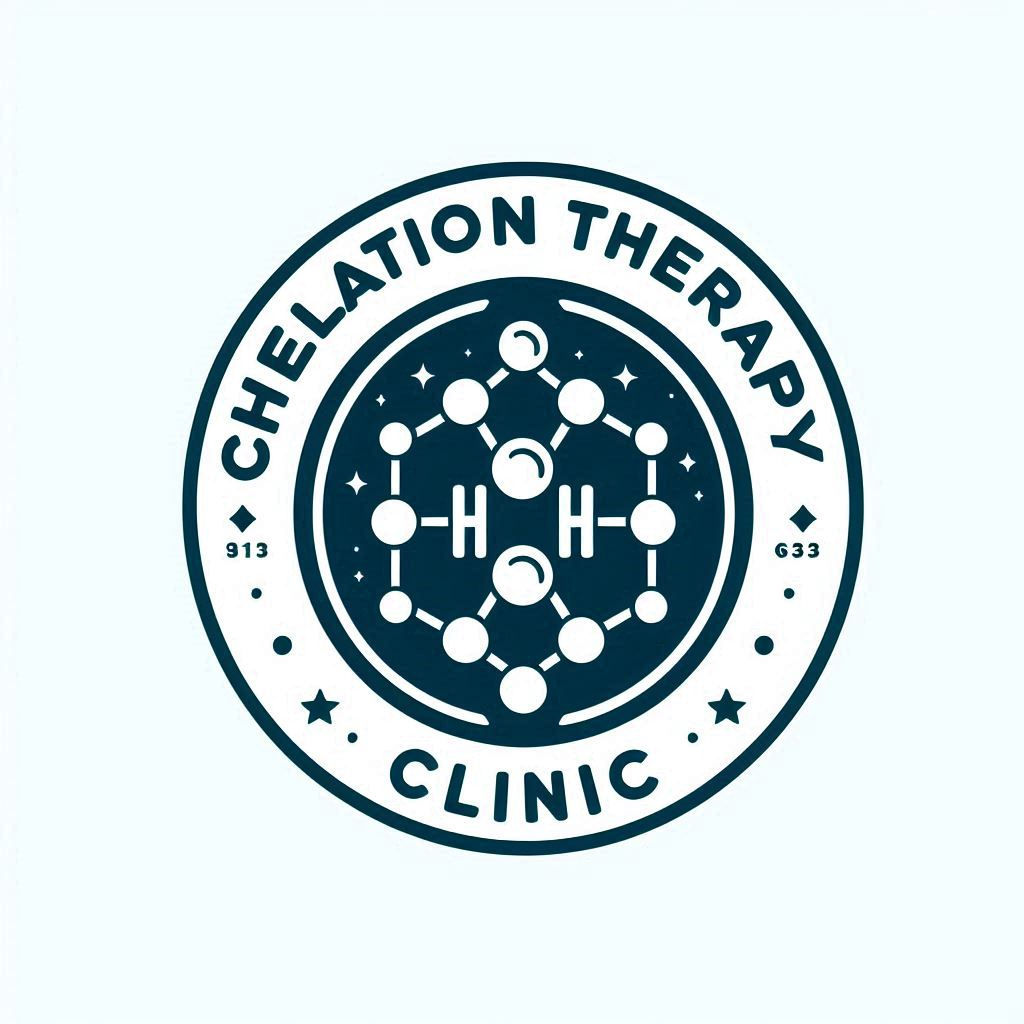Your cart is currently empty!

Need to remove heavy metals?
Improve your well-being
with Chelation Therapy
The Chelation Therapy Clinic commits to being a leading provider of Chelation Therapy in Edmonton, Alberta, Canada
What is Chelation Therapy?
Chelation Therapy is a process where the chelator is either injected via iv drip infusion or through suppositories. The chelator binds with the heavy metals, and both are then eliminated from the body through the kidneys. The scientific studies validates that the long-term exposure to heavy metals can lead to various health problems, including neurological disorders, cardiovascular diseases, and kidney damage. For more researh on the TACT Trial.
What are the Benefits?
The chelation therapy offers 30 potential benefits, such as reducing cardiovascular events, managing lead poisoning, lowering oxidative stress, and treating iron overload. It may also provide neuroprotective effects, improve kidney and heart function, and aid in detoxification.
What are the Risks?
While promising for specific conditions, chelation therapy efficacy and safety remain subjects of ongoing research and debate. Please consider these potential risks assositaeted with the chelation therapy procedure.
What are the Steps?
Five steps to a successfull Chelation Therapy
- Book Free Appointment: Meet with our exper to discuss your health goals and concerns.
- Test Blood: We conduct blood tests to assess kidney and liver function. (DynaLIFE Medical Labs Location)
- Test Urine: Evaluate your exposure to toxic metals with a comprehensive urine analysis. (Order Urine Test)
- Start Chelation: Begin a three hour chelation therapy to safely remove heavy metals from your body.
- Start Monitoring: Measure the levels including blood pressure, kidney and liver health to ensure optimal body health to handle the detoxification.
It’s important to note that chelation therapy should only be performed under the supervision of a qualified healthcare professional, as it can have potential side effects and risks.
Testimonials

“Chelation allowed me to once again enjoy hunting! I was able to walk without feeling short of breath. My buddies didn’t have to wait for me like they usually do.
The team’s commitment to my well-being was evident at every step. Grateful for their expertise!”
Patrick
64 years old
For More Testimonials
Frequently Asked Questions
What is Chelation Therapy, and How Does It Work?
Chelation therapy is a medical procedure involving the administration of chelating agents to remove heavy metals from the body. These agents bind to metals, forming compounds that are then excreted from the body through urine.
What Heavy Metals Does Chelation Therapy Target?
Chelation therapy primarily targets heavy metals such as lead, mercury, cadmium, and arsenic. These metals can accumulate in the body over time and may contribute to various health concerns.
How Long Does a Chelation Therapy Session Take?
The duration of a chelation therapy session can vary, but it typically takes 3 hours for a full dose infusion. Half doses can be administered if time is an issue.The number of sessions required depends on individual health needs and the severity of metal toxicity.
Why Consider Chelation Therapy?
Chelation therapy is often considered for individuals with heavy metal toxicity. It can help address symptoms related to metal exposure, improve circulation, and potentially reduce the risk of certain health issues.
Are There Risks Associated with Chelation Therapy?
While generally considered safe when administered by trained professionals, chelation therapy may have side effects. These can include temporary discomfort at the injection site and, rarely, more serious reactions. It’s crucial to undergo therapy under the supervision of a qualified healthcare provider.
What Should I Expect During a Chelation Therapy Session?
During a session, a chelating agent is administered intravenously. Patients may relax, read, or engage in quiet activities during the procedure. It’s important to stay hydrated before and after the session.

Have more inquiries related to your health and wellness journey?
Struggling to locate the information you need? Connect with us directly.
Measures your Exposure to Heavy Metals
Our Urine Element testing kit measures exposure to 21 diffrent heavy metals and evaluates the levels of toxicity.


Active participation in Chelation Research
✓ Participation in or contribution to research related to chelation therapy and detoxification.
✓ Staying informed about advancements in the field for evidence-based practices.

Need to remove heavy metals?
Improve your well-being
with Chelation Therapy
The Chelation Therapy Clinic commits to being a leading provider of Chelation Therapy in Edmonton, Alberta, Canada
What is Chelation Therapy?
Chelation Therapy is a process where the chelator is either injected via iv drip infusion or through suppositories. The chelator binds with the heavy metals, and both are then eliminated from the body through the kidneys. The scientific studies validates that the long-term exposure to heavy metals can lead to various health problems, including neurological disorders, cardiovascular diseases, and kidney damage. For more researh on the TACT Trial.
What are the Benefits?
The chelation therapy offers 30 potential benefits, such as reducing cardiovascular events, managing lead poisoning, lowering oxidative stress, and treating iron overload. It may also provide neuroprotective effects, improve kidney and heart function, and aid in detoxification.
What are the Risks?
While promising for specific conditions, chelation therapy efficacy and safety remain subjects of ongoing research and debate. Please consider these potential risks assositaeted with the chelation therapy procedure.
What are the Steps?
Five steps to a successfull Chelation Therapy
- Book Free Appointment: Meet with our exper to discuss your health goals and concerns.
- Test Blood: We conduct blood tests to assess kidney and liver function. (DynaLIFE Medical Labs Location)
- Test Urine: Evaluate your exposure to toxic metals with a comprehensive urine analysis. (Order Urine Test)
- Start Chelation: Begin a three hour chelation therapy to safely remove heavy metals from your body.
- Start Monitoring: Measure the levels including blood pressure, kidney and liver health to ensure optimal body health to handle the detoxification.
It’s important to note that chelation therapy should only be performed under the supervision of a qualified healthcare professional, as it can have potential side effects and risks.
Testimonials

“Chelation allowed me to once again enjoy hunting! I was able to walk without feeling short of breath. My buddies didn’t have to wait for me like they usually do.
The team’s commitment to my well-being was evident at every step. Grateful for their expertise!”
Patrick
64 years old
For More Testimonials
Frequently Asked Questions
What is Chelation Therapy, and How Does It Work?
Chelation therapy is a medical procedure involving the administration of chelating agents to remove heavy metals from the body. These agents bind to metals, forming compounds that are then excreted from the body through urine.
What Heavy Metals Does Chelation Therapy Target?
Chelation therapy primarily targets heavy metals such as lead, mercury, cadmium, and arsenic. These metals can accumulate in the body over time and may contribute to various health concerns.
How Long Does a Chelation Therapy Session Take?
The duration of a chelation therapy session can vary, but it typically takes 3 hours for a full dose infusion. Half doses can be administered if time is an issue.The number of sessions required depends on individual health needs and the severity of metal toxicity.
Why Consider Chelation Therapy?
Chelation therapy is often considered for individuals with heavy metal toxicity. It can help address symptoms related to metal exposure, improve circulation, and potentially reduce the risk of certain health issues.
Are There Risks Associated with Chelation Therapy?
While generally considered safe when administered by trained professionals, chelation therapy may have side effects. These can include temporary discomfort at the injection site and, rarely, more serious reactions. It’s crucial to undergo therapy under the supervision of a qualified healthcare provider.
What Should I Expect During a Chelation Therapy Session?
During a session, a chelating agent is administered intravenously. Patients may relax, read, or engage in quiet activities during the procedure. It’s important to stay hydrated before and after the session.

Have more inquiries related to your health and wellness journey?
Struggling to locate the information you need? Connect with us directly.
Measures your Exposure to Heavy Metals
Our Urine Element testing kit measures exposure to 21 diffrent heavy metals and evaluates the levels of toxicity.


Active participation in Chelation Research
✓ Participation in or contribution to research related to chelation therapy and detoxification.
✓ Staying informed about advancements in the field for evidence-based practices.
